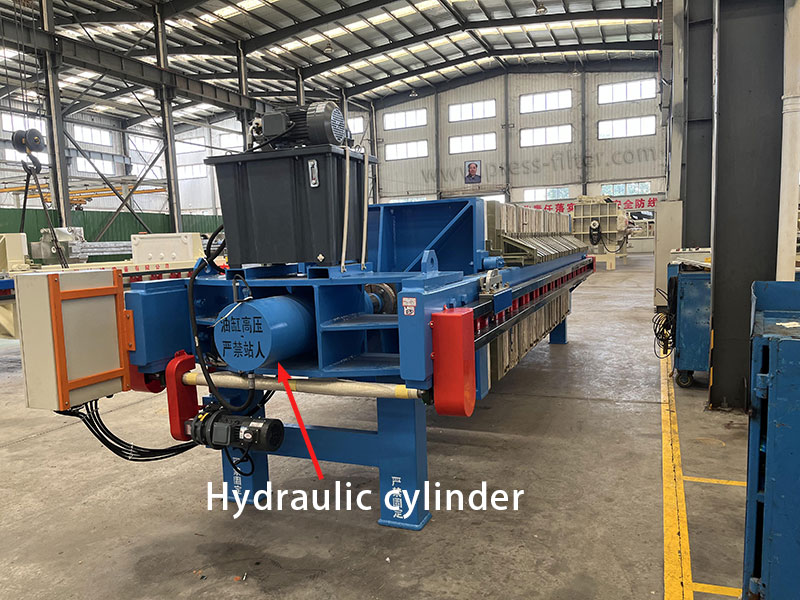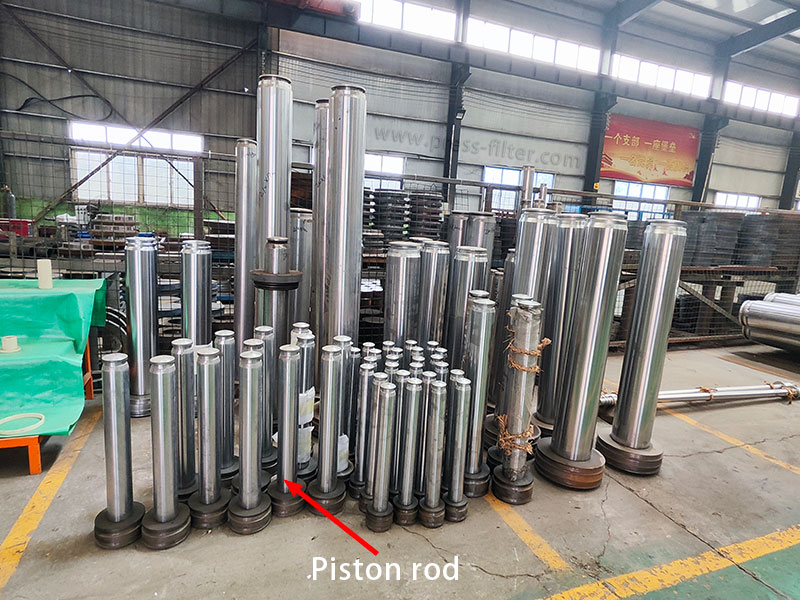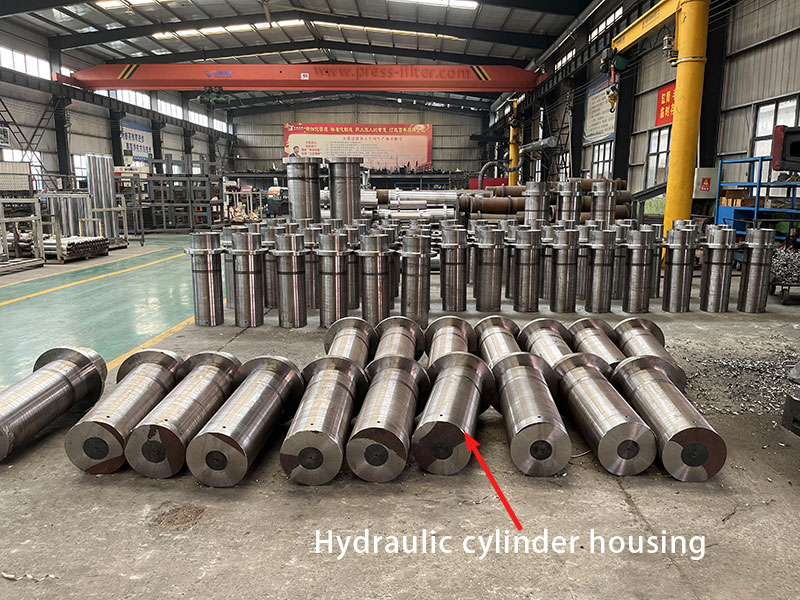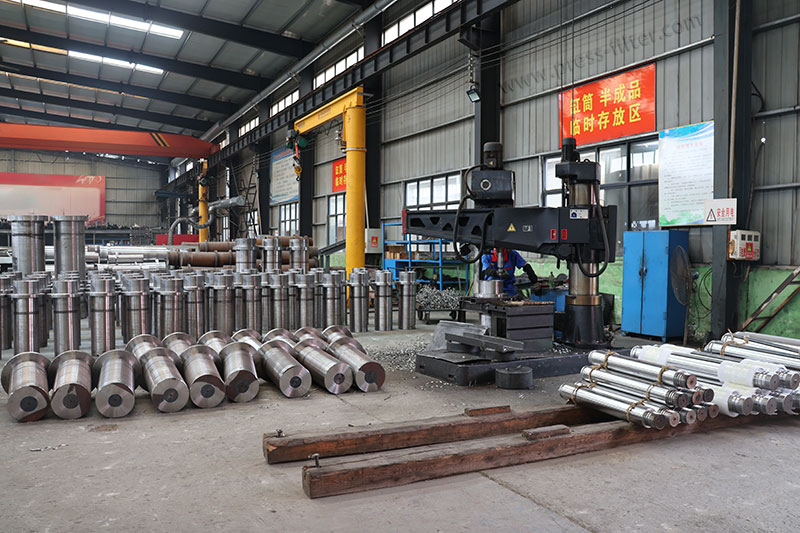How to Extend the Service Life of Filter Press Hydraulic Cylinder?
The hydraulic cylinder of the filter press is a key component of the filter press. It is responsible for applying pressure to squeeze the filter material. Its design can vary depending on the specifications and requirements of the filter press but usually consists of a sealed container with a compressed medium (such as a gas or liquid) inside, which is controlled to achieve the required pressure during the filtration process. During the filtration process, the oil cylinder exerts continuous pressure to make the filter plates fit tightly, thereby promoting the separation and filtration of liquids.

The hydraulic cylinder of the filter press can withstand a large workload and has high push-pull force and lifting capacity. In addition, it also has smooth movement without impact and vibration, which can ensure the stability and accuracy of the mechanical equipment. Its movement Speed and force can be precisely controlled by adjusting the pressure and flow of the hydraulic system.
The Main Components
End Cap: The end cap is one of the two end parts of a hydraulic cylinder and is usually located at either end of the hydraulic cylinder. End caps are usually made of metal and are used to close the internal space of the hydraulic cylinder and provide sealing performance and support structure.
Piston: The piston is a sealed component that moves inside a hydraulic cylinder and is usually cylindrical or conical. The piston separates the internal space of the hydraulic cylinder and can move along the inner wall of the cylinder under the action of hydraulic pressure, thereby realizing the working function of the hydraulic cylinder.
Piston Rod: The piston rod is the component that connects the piston to the external load, usually extending from the center of the piston and through the end cap of the hydraulic cylinder. The movement of the piston rod is connected to the piston of the hydraulic cylinder through the piston rod sealing device, thereby realizing the transmission of force and the movement of the load.

Cylinder housing: The cylinder housing is the main part of the hydraulic cylinder. It is usually a long cylindrical structure that houses the piston and piston rod. The cylinder casing is usually made of metal materials and has certain strength and corrosion resistance to withstand the effects of hydraulic pressure and load.

Seals: Seals are very important components in hydraulic cylinders, used to prevent hydraulic oil leakage and ensure the sealing performance of the hydraulic cylinder. Seals usually include piston seal rings, piston rod seals, end cover seals, etc. Their quality and condition have an important impact on the performance and life of the hydraulic cylinder.
Reasons for Pressure Relief in Filter Press Hydraulic Cylinder
- After long-term use, the sealing ring will age and wear, causing pressure relief. The solution is to replace the sealing ring.
- Impurities or foreign matter may have entered the inside of the cylinder, resulting in loose sealing and pressure relief. The solution is to clean the cylinder and replace the sealing ring.
- When the hydraulic cylinder is operated at a high temperature for a long time, the sealing ring easily deforms or fails, causing pressure relief. The solution is to lower the operating temperature or replace the temperature-resistant sealing ring.

How to Maintain A Hydraulic Cylinder?
- Regular inspection and maintenance of hydraulic cylinders is key to extending their service life. Including checking the wear degree of seals, pistons and other components to ensure that their sealing and mobility are good. At the same time, check the hydraulic system, pressure sensors and other related equipment to ensure their normal operation.
- Following the operation manual and safety regulations of the filter press and the correct use and operation of the cylinder are the basis for maintaining its good condition. Avoid undesirable operating behaviors such as overload operation, sudden stops, or repeated impacts to reduce damage to the cylinder.
- Regularly clean the surface of the cylinder and the surrounding environment to prevent dust, dirt, and other debris from entering the interior of the cylinder and reduce friction and wear.
- If the oil cylinder is equipped with a lubrication system, regularly changing the lubricating oil and ensuring that the oil is clean is one of the important measures to maintain the normal operation of the oil cylinder and extend its service life.
- Avoid long-term overload operation or frequent overload operation of the hydraulic cylinder to reduce damage to the internal structure and seals of the cylinder.
- If the oil cylinder is equipped with a pressure sensor, calibrate and adjust the sensor regularly to ensure its accuracy and stability.
- Maintaining a suitable working environment temperature is also very important for the normal operation and life of the cylinder, and avoiding excessively high or low-temperature environments.

